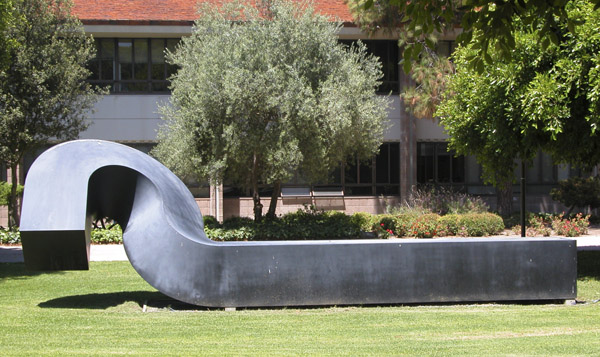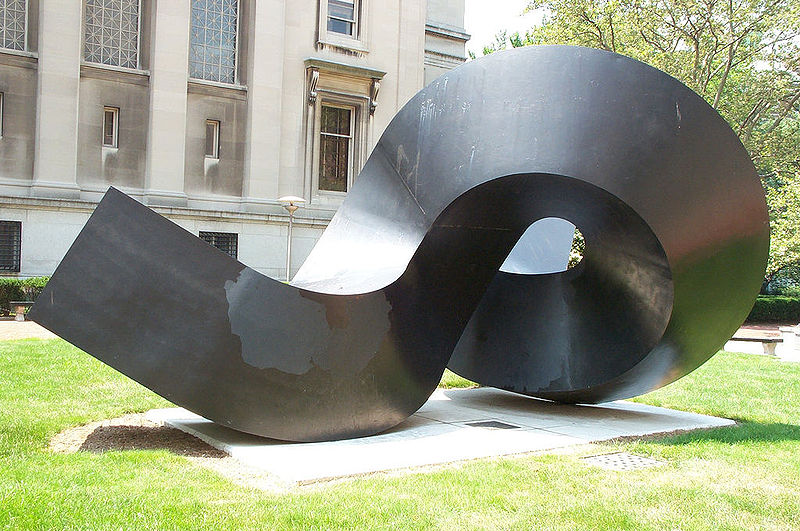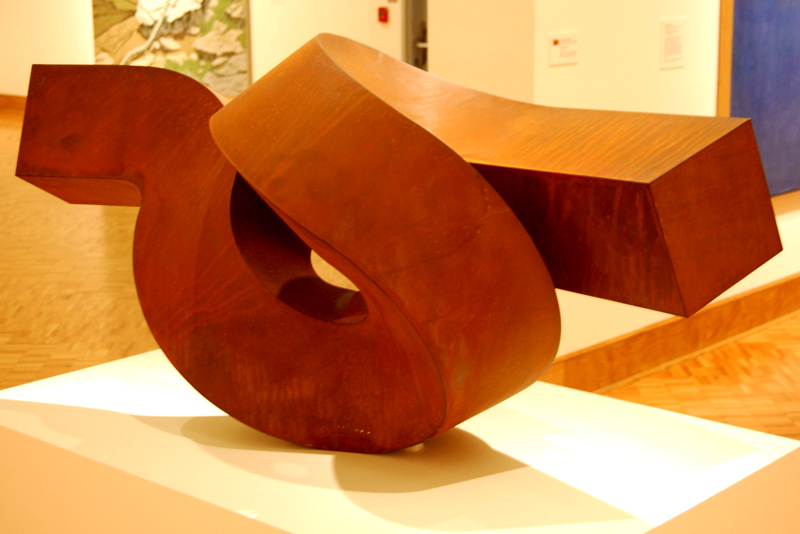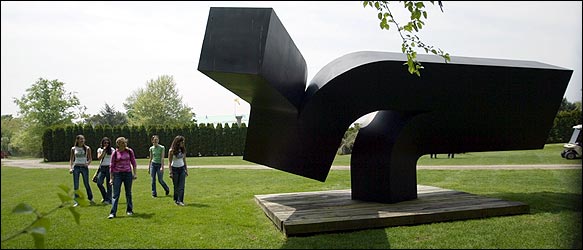The massive sculpture that faintly resembles an incomplete question mark, made of a square-sided, bent and twisted steel beam that looms on the campus lawn between Ellison Hall and North Hall, is eye-catching, to say the least. Susanne Baumgart, our Senior Artist, Photographer, Webmaster, Writer, Editor, and Publisher from 1998 to 2005, was fascinated by it and came to the conclusion that it represented the letters U, C, S, and B, depending upon the angle of view.
Your editor contacted the UCSB Art Museum, mentioning Susanna’s theory and asking for information regarding the sculpture. Kathryn Kanjo, Director of the Museum, replied: “Thanks for your fun inquiry about the Museum’s outdoor sculpture. Australian artist Clement Meadmore typically combines the geometric and the sinuous to effectively animate his monumental sculptures. Although Meadmore was not intent on spelling out our campus acronym, the outsized object does seem to be coming to life and twisting to upright. Perhaps it’s headed to Cheadle Hall to claim a diploma?”
According to the official description of the piece in question, Clement Meadmore (1929-2005) created “Up Ended” in 1969; it was constructed of cor-ten steel and black paint, and the work was donated to the UCSB museum collection by Ruth S. Schaffner, who owned art galleries in Santa Barbara, Los Angeles, and Newport Beach. While Susanna’s theory that the sculpture is a three dimensional acronym is typical of her lateral thinking and refreshing creativity, Meadmore was adamant that his work was not symbolic or pictorial: “I’m not interested in metaphors of infinity or of anything else,” he told Time magazine in 1971. “I have to start with a real object, a thing – and then try to let it transcend its physicality.”
Meadmore studied aeronautical engineering and industrial design in Australia, designed furniture for several years, and began his career as a sculptor in the 1950s. He moved to New York City in 1963, became an American citizen, and had numerous, international, one man shows throughout his career. His works are displayed in many public collections and public spaces, including US campuses such as UCSB, Princeton, and Columbia, and are part of the permanent collections of the Metropolitan Museum of Art, the Art Institute of Chicago, and the National Gallery of Australia. According to his New York Times obituary, “Meadmore’s sculptures combined Minimalism’s devotion to pure geometric form with the evocative powers of Abstract Expressionism. They were also influenced by the rhythms and improvisational quality of jazz, an art form he passionately admired. His best pieces were studies in line, form, movement and balance, played out at epic scale.”
“Epic scale” is the dominant feature of our acquisition of Meadmore’s work (although his works range in size from those that fit in the palm of your hand to others that stretch more than forty-six feet). While the Director of our museum teasingly suggests that, “Perhaps it’s headed to Cheadle Hall to claim a diploma,” it also could be argued that it was sited near the Department of Geography to illustrate Tobler’s First Law of Geography: “Everything is related to everything else, but near things are more related than distant things.” Think about your relationship with “Up Ended” the next time you see it—and try to view it from different angles.
Editor’s Note: For more about Meadmore’s work, see http://www.meadmore.com/
Article by Bill Norrington







